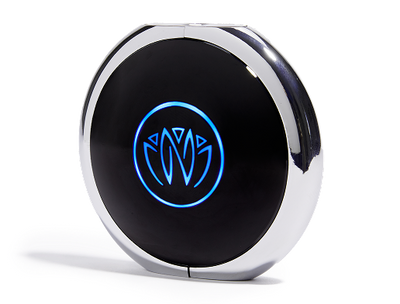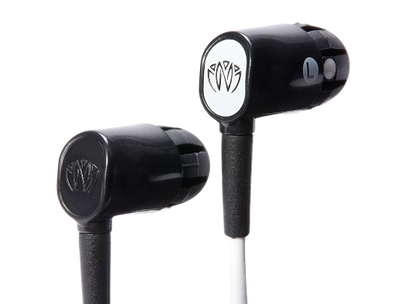New to neurostimulation? You're in the right place. Today, we'll tell you everything you need to know to get started, including the benefits of neurostimulation and how it can even help with depression. We'll also tell you how Xen by Neuvana offers an effective non-surgical neurostimulation option you can use from the comfort of your home.
Let's start with the basics!
What Is Neurostimulation?
Neurostimulation, also known as neurostimulation therapy, is a treatment that uses electrical impulses to stimulate the nervous system. This can help to ease conditions like pain, depression, and other issues.
Different types of neurostimulators are available, each with unique benefits. Along with vagus nerve stimulation (VNS), one of the most common neurostimulator types is the transcranial magnetic stimulator (TMS). This uses magnetic fields to stimulate nerve cells in the brain. In doing so, it can help to improve mood and ease depression. Other neurostimulators include deep brain stimulators (DBS) and spinal cord stimulators (SCS).
Some neurostimulators require surgery to implant them, while others are non-surgical.
Neurostimulation Side Effects
Though neurostimulation is generally safe, there are some potential side effects to be aware of. They can also vary depending on the type of neurostimulation you're receiving.
The most common side effects of neurostimulation include headaches, tingling, and dizziness. These usually go away after the first few sessions.
Surgical Neurostimulators
In this article, we'll focus more on non-surgical neurostimulation, but let's briefly review surgical neurostimulators first.
Surgical neurostimulators are implanted devices that deliver electrical impulses to the nervous system. They're most often used to treat chronic pain, Parkinson's disease, and dystonia.
DBS is the most common type of surgical neurostimulator. It involves implanting a device in the brain that sends electrical impulses to specific areas. DBS is usually only recommended when other treatments haven't been effective.
SCS is another type of surgical neurostimulator that's used to treat chronic pain. This involves surgically placing a device near the spinal cord that sends electrical impulses to the nerves. SCS is effective in treating pain from conditions like degenerative disc disease and spinal stenosis in some people.
Non-Surgical Neurostimulation
Now let's focus on non-surgical neurostimulators, devices that deliver electrical impulses to the nervous system without requiring surgery. These devices can be used to treat conditions like pain, depression, and migraines.
There are several non-surgical neurostimulation options to choose from. One of the most popular is TMS. As we mentioned, this uses magnetic fields to stimulate the brain. This makes it a great option for those who want to avoid surgery.
Another non-surgical neurostimulation method is called transcranial direct current stimulation (tDCS). This delivers low levels of electrical current to the brain through electrodes placed on the scalp. This can help to improve mood and ease depression symptoms.
Xen by Neuvana is a non-surgical neurostimulation device that stimulates the vagus nerve with special headphones that connect to a handheld device. This device wirelessly connects to your smartphone, where you can control your device from the Neuvana app.
Xen offers a convenient and affordable neurostimulation option that can be used from the comfort of your own home. That way, you can enjoy the many benefits of vagus nerve stimulation without undergoing surgery or even leaving your home.
Now that we've answered the question "what is neurostimulation," let's talk about some of the benefits!
Benefits of Neurostimulation
Neurostimulation can offer a wide range of benefits, from easing pain to improving mood. Next, we'll take a closer look at some of the most common benefits of neurostimulation.
Eases pain
Neurostimulation can help to ease chronic pain by interrupting pain signals from reaching the brain. In doing so, neurostimulation can help you to feel more comfortable and improve your quality of life.
Neurostimulation is also shown to help many people with neuropathic pain, which is often resistant to other treatments. This type of pain is caused by damage or dysfunction of the nervous system.
Improves mood
As we mentioned, neurostimulation can help to ease depression symptoms, in part by stimulating nerve cells in the brain. This can lead to an improved mood and a better quality of life—we'll talk more in-depth about this subject in a moment.
Reduces anxiety
Neurostimulation can also help to reduce anxiety by stimulating the nervous system, helping you feel more relaxed, and easing your anxiety symptoms.
Increases focus
Some neurostimulation techniques, like transcranial direct current stimulation (tDCS), can help to increase focus by delivering electrical current to the brain. This can be beneficial for those with attention deficit hyperactivity disorder (ADHD) or other issues with focus.
Vagus nerve stimulation can also help to increase focus by promoting neuroplasticity. This is the brain's ability to change and adapt in response to new experiences.
Improve sleep efficiency
One of the other benefits of neurostimulation is how it can improve your sleep. This can be especially beneficial if you have insomnia or another sleep disorder. But even if you don't have these issues, couldn't we all benefit from better sleep?
Neurostimulation can help to improve sleep efficiency by reducing the time it takes to fall asleep and increasing the amount of time you spend in deep sleep. This can lead to improved sleep quality and overall health.
Brain training
Another potential benefit of neurostimulation is how it can help to improve cognitive function. For example, neurostimulation can help you think more clearly, remember things better, and stay mentally sharp.
Some neurostimulation techniques, like transcranial magnetic stimulation (TMS), can help to improve cognitive function by stimulating nerve cells in the brain. This can be beneficial for those with Alzheimer's disease or other forms of dementia and healthy individuals who want to keep their minds sharp.
Gastrointestinal health
For some, neurostimulation can also help to improve gastrointestinal health, particularly when it involves vagus nerve stimulation. This is because neurostimulation can help to stimulate the vagus nerve, which is largely responsible for controlling the digestive system.
Neurostimulation can help to ease gastrointestinal issues like constipation, diarrhea, and nausea. This can lead to improved overall health and quality of life.
As you can see, neurostimulation offers a wide range of potential benefits. Next, let's dive further into the topic of neurostimulation and depression to better highlight how neurostimulation can be beneficial.
How Neurostimulation Helps with Depression
Depression is a common mental health disorder that can cause many symptoms, from low mood and sadness to fatigue and difficulty concentrating. Unfortunately, depression is also difficult for many people to treat.
This is where neurostimulation comes in. Neurostimulation offers a new and innovative way to treat depression. Not only is neurostimulation for depression an effective treatment, but it's also a safe and well-tolerated treatment option. This makes neurostimulation an appealing treatment option.
For some people, neurostimulation can help to ease depression symptoms by stimulating the nervous system. This can lead to an improved mood and a better quality of life.
There are a few different neurostimulation techniques that are helpful for those with depression, including transcranial magnetic stimulation (TMS), transcranial direct current stimulation (tDCS), and vagus nerve stimulation (VNS).
Each of these neurostimulation techniques works slightly differently, but they all share the goal of stimulating the nervous system to help ease depression symptoms.
TMS and depression
TMS is a neurostimulation technique that uses magnetic fields to stimulate brain nerve cells, specifically the prefrontal cortex cells. This area of the brain is responsible for regulating mood.
Studies have found that TMS can be an effective treatment for depression. In fact, one study showed that TMS was just as effective as antidepressant medication for treating depression.
Not only is TMS an effective treatment for depression, but it's also a safe and well-tolerated treatment option. This makes TMS an appealing treatment option for many people.
tDCS and depression
tDCS is another neurostimulation technique that uses electrical current to stimulate nerve cells in the brain. It is also a non-invasive technique that is typically well-tolerated by patients.
Like TMS, many studies have shown that tDCS can effectively treat depression.
VNS and depression
VNS is a neurostimulation technique that uses electrical stimulation to stimulate the vagus nerve. The vagus nerve is a long nerve that runs from the brainstem down to the abdomen. It involves several important functions, including controlling the digestive system and regulating the body's stress response. It also plays a role in mood and emotional regulation.
A number of studies have shown that VNS can be an effective treatment for depression. For example, one study found that VNS was more effective than sham VNS (a placebo treatment) in reducing depression symptoms.
Another study found that VNS was associated with significantly improving depressive symptoms, including low mood, fatigue, and difficulty concentrating.
Did we get your attention? Then keep reading to learn more about Xen by Neuevana and how vagus nerve stimulating headphones to work.
Xen by Neuvana
Xen is a neurostimulation device that uses electrical stimulation to stimulate the vagus nerve. It is a non-invasive device that is worn like a pair of headphones. It stimulates the vagus nerve through the ear rather than through the neck or with surgical implantation like traditional VNS devices.
How does it work?
So, how exactly does Xen work? This vagus nerve stimulation device sends electrical impulses through the ear to stimulate the vagus nerve. When the vagus nerve is stimulated, this helps tone it. And when the vagus nerve is toned, you can reap many rewards! To better understand why let's talk more about precisely what the vagus nerve does and what it's responsible for.
What does the vagus nerve do?
The vagus nerve is responsible for several important functions, including:
- Controlling the digestive system
- Regulating the body's stress response
- Playing a role in mood and emotional regulation
Functions of the vagus nerve
As you can see, the vagus nerve is responsible for some pretty critical functions! And when it's not functioning properly, it can lead to a number of problems. So utilizing Xen by Neuvana headphones can be a game-changer when it comes to improving your mood, sleep, recovery, and overall quality of life.
Try Neurostimulation Today
Why wait if VNS is right for you or you're interested in exploring other neurostimulation techniques like TMS or tDCS?
Speak with your doctor about neurostimulation and whether it fits you well. And be sure to check out Xen by Neuevana if you're interested in vagus nerve stimulation at home.






